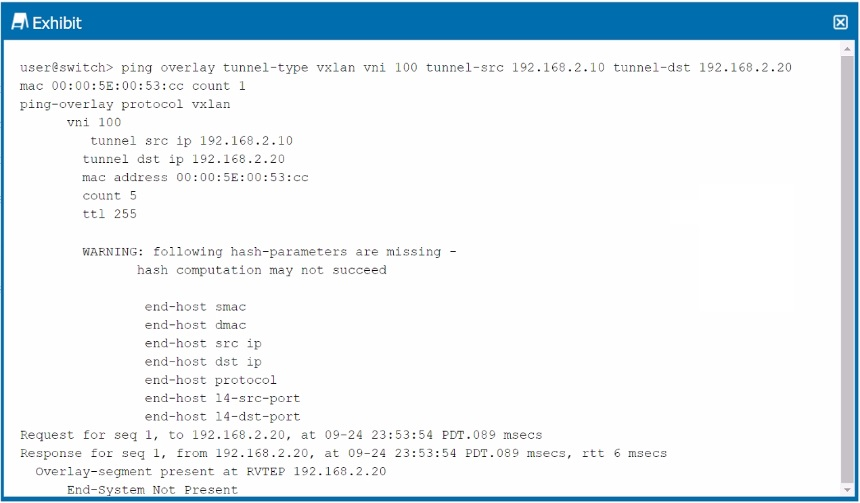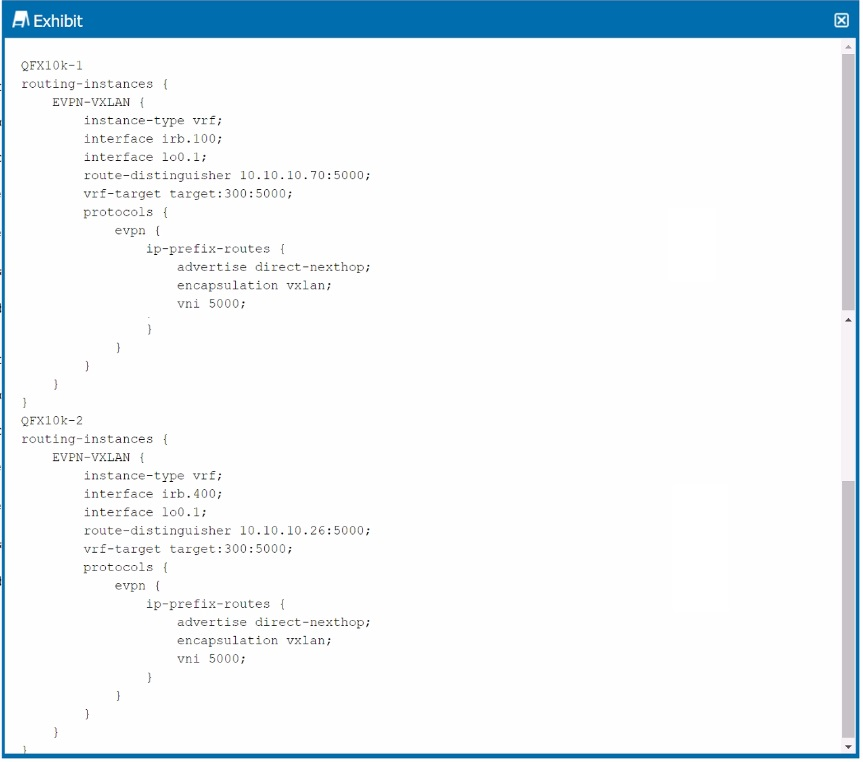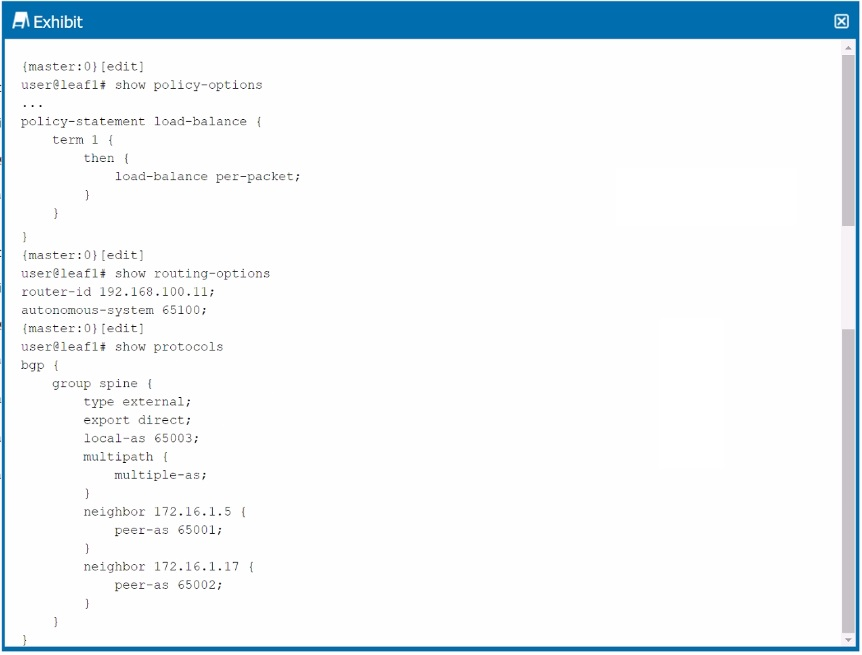Master Juniper JN0-683 Exam with Reliable Practice Questions
You are deploying a Clos IP fabric with an oversubscription ratio of 3:1.
In this scenario, which two statements are correct? (Choose two.)
Correct : B, C
Understanding Oversubscription in a Clos Fabric:
The oversubscription ratio in a Clos IP fabric measures the ratio of the amount of edge (leaf) bandwidth to the core (spine) bandwidth. An oversubscription ratio of 3:1 means that there is three times more edge bandwidth compared to core bandwidth.
Impact of Adding/Removing Spine Devices:
Option C: If you remove spine devices, the total available core bandwidth decreases, while the edge bandwidth remains the same. This results in an increase in the oversubscription ratio because there is now less core bandwidth to handle the same amount of edge traffic.
Option B: Conversely, if you add spine devices, the total core bandwidth increases. This decreases the oversubscription ratio because more core bandwidth is available to handle the edge traffic.
Conclusion:
Option C: Correct---Removing spine devices increases the oversubscription ratio.
Option B: Correct---Adding spine devices decreases the oversubscription ratio.
Start a Discussions
Exhibit.

Referring to the exhibit, which statement is correct?
Correct : B
Analyzing the Exhibit Output:
The command ping overlay tunnel-type vxlan is used to test the VXLAN tunnel between two VTEPs (VXLAN Tunnel Endpoints). The output shows a warning about missing hash parameters, but more importantly, it displays the result: End-System Not Present.
Understanding the Response:
The message End-System Not Present indicates that the remote VTEP (192.168.2.20) did not find the MAC address 00:00:5E:00:53:CC in its forwarding table. This typically means that the MAC address is unknown to the remote VTEP, and as a result, it could not forward the packet to the intended destination.
Conclusion:
Option B: Correct---The MAC address is unknown and is not in the forwarding table of the remote VTEP, which is why the system reports that the 'End-System' is not present.
Start a Discussions
You are asked to interconnect Iwo data centers using a method that provides EVPN Type 2 connectivity, is highly scalable, and limits VXLAN tunnels between border leaf devices. What will satisfy these requirements?
Correct : D
Requirement Analysis:
The scenario requires a solution to interconnect two data centers that supports EVPN Type 2 connectivity. The solution must be highly scalable and must minimize the number of VXLAN tunnels between border leaf devices.
Understanding Type 2 Seamless Stitching:
Option D: Type 2 seamless stitching is a method used in EVPN to provide Layer 2 connectivity (such as MAC address mobility) across different VXLAN segments. It is scalable because it allows only necessary tunnels to be established between border leaf devices, reducing the overhead of maintaining a full mesh of VXLAN tunnels.
Conclusion:
Option D: Correct---Type 2 seamless stitching satisfies the requirement by enabling scalable, efficient interconnection of two data centers with minimal VXLAN tunnels.
Start a Discussions
Exhibit.

You have a sample configuration for connecting two sites through EVPN-VXLAN by exchanging IP prefix routes.
Referring to the exhibit, which two statements regarding the configuration are true? {Choose two.)
Correct : A, C
EVPN-VXLAN Configuration:
The configuration provided in the exhibit shows an EVPN-VXLAN setup where IP prefix routes are exchanged between two sites. The advertise direct-nexthop option and the VNI (Virtual Network Identifier) settings are crucial in this context.
Advertise Direct-Nexthop:
Option A: The advertise direct-nexthop option ensures that the next-hop route is resolved using only the information carried in the EVPN Type 5 route. Type 5 routes are used for IP prefix advertisement in EVPN, which is key to enabling Layer 3 interconnectivity between different VXLAN segments.
VNI Consistency:
Option C: For the same customer across different devices, the VNI must be consistent. This consistency ensures that all devices can correctly map traffic to the appropriate VXLAN segment, maintaining seamless Layer 2 and Layer 3 connectivity.
Start a Discussions
Exhibit.

You are troubleshooting an IP fabric (or your data center. You notice that your traffic is not being load balanced to your spine devices from your leaf devices. Referring to the configuration shown in the exhibit, what must be configured to solve this issue?
Correct : B
IP Fabric Load Balancing:
In the provided configuration, traffic is not being load-balanced to the spine devices. The issue likely relates to how BGP routes are being selected and whether Equal-Cost Multi-Path (ECMP) is functioning correctly.
Multipath Multiple-AS:
Option B: The multipath multiple-as configuration is essential when using BGP in an IP fabric where devices belong to different Autonomous Systems (AS). This setting allows BGP to consider multiple paths (even across different AS numbers) as equal cost, enabling ECMP and proper load balancing across spine devices.
Conclusion:
Option B: Correct---The multipath multiple-as configuration is necessary for achieving ECMP and effective load balancing in a multi-AS BGP environment.
Start a Discussions